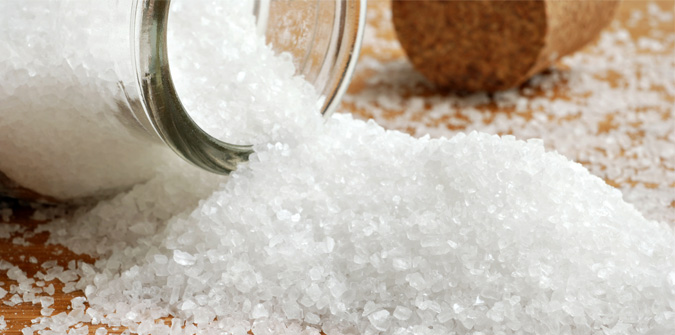Low Sodium Diets
High sodium intake has been linked with high blood pressure and this increases your risk of developing coronary heart disease. Not everyone is susceptible to high blood pressure through eating too much sodium (salt) but research estimates that 10-25% of the population are. In the UK Government’s Salt and Health Report 2003 salt targets were set at less than 6g salt per day for the adult population. They reported that 34,000 lives each year could be saved in the UK by halving the salt in our diets.
Sodium is found naturally in foods in low amounts such as meat, fish, vegetables and fruit. Sodium is present in our bodies and plays a role with potassium and chloride in regulating fluid balance and also important in muscle and nerve activity. It is present in all the body’s fluids especially outside the cells and in the blood. In the UK we are eating more than we need at around 9g salt per day.
Main Sources
The main source of sodium in the diet comes from the salt used in cooking and added at the table. Other main sources come from stock cubes, bottled or canned sauces, soups, smoked and cured foods, pickles, savoury snacks such as peanuts and crisps. Many processed foods contain high levels also such as baked beans, tinned vegetables, canned spaghetti, sweet biscuits, ready meals and pizzas. Salt is also found in staple foods like bread and breakfast cereals. Therefore being able to read food labels is essential when trying to cut down your salt intake.
Sodium is found naturally in foods in low amounts such as meat, fish, vegetables and fruit. Sodium is present in our bodies and plays a role with potassium and chloride in regulating fluid balance and also important in muscle and nerve activity. It is present in all the body’s fluids especially outside the cells and in the blood. In the UK we are eating more than we need at around 9g salt per day.
Main Sources
The main source of sodium in the diet comes from the salt used in cooking and added at the table. Other main sources come from stock cubes, bottled or canned sauces, soups, smoked and cured foods, pickles, savoury snacks such as peanuts and crisps. Many processed foods contain high levels also such as baked beans, tinned vegetables, canned spaghetti, sweet biscuits, ready meals and pizzas. Salt is also found in staple foods like bread and breakfast cereals. Therefore being able to read food labels is essential when trying to cut down your salt intake.
Salt Targets
Age |
Maximum salt allowed per day |
1-3 years |
2g |
4-6 years |
3g |
7-10 year s |
5g |
11 years and older |
6g |
Top tips to reduce your intake
- Don’t add salt to your food or during cooking.
- Flavour your cooking with herbs, spices, garlic and lemon juice.
- Swap salty snacks for fruit and vegetables.
- Limit highly salted foods such as bacon, cheese, takeaway and ready meals.
- Choose a reduced salt version.
- Use low sodium stock cubes, or ½ a cube for cooking.
- Check labels on food, salt may be listed as ‘sodium’ on the label rather than salt. To convert sodium into salt you need to multiply the measurement on the label by 2.5.
- The new food labels introduced by the main large supermarkets indicate on the front of the package the salt or sodium content. If highlighted in red this indicates the product is high in salt.

